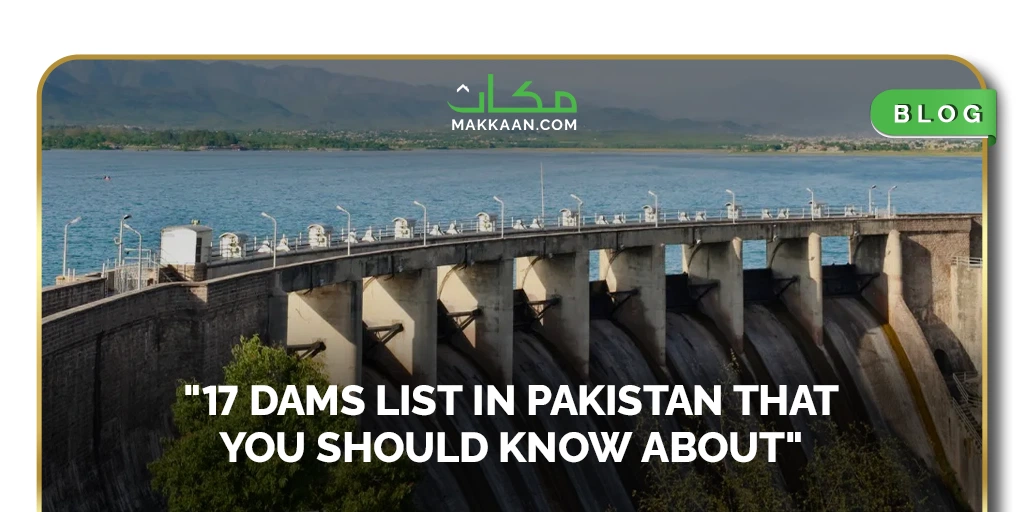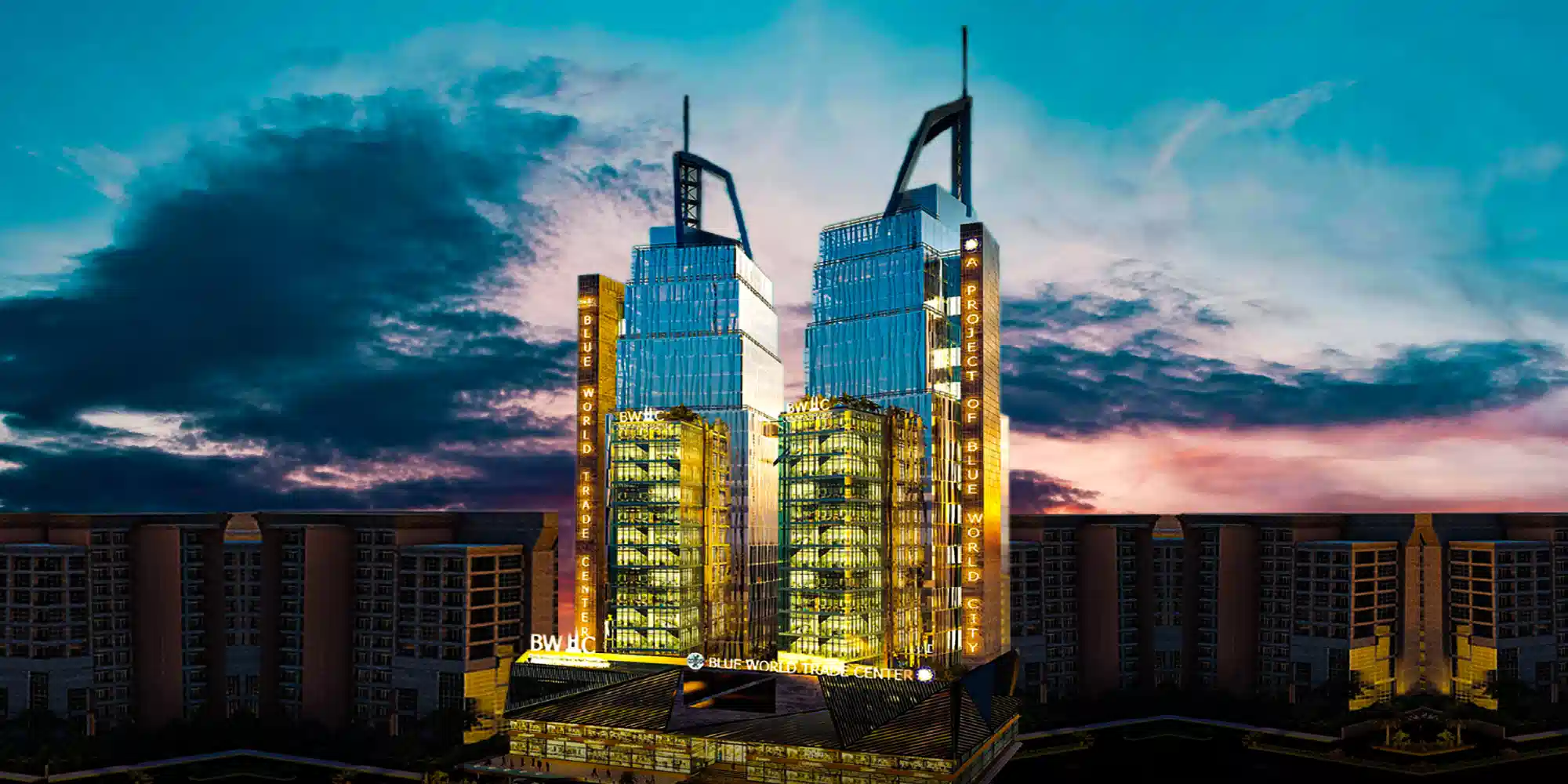17 Dams List in Pakistan That You Should Know About
Pakistan is blessed with scenic majestic desserts and an abundance of natural resources. Surprisingly, Pakistan has over 150 dams spanning all areas; however, we have collected a collection of Pakistan’s most renowned dams. These massive structures not only provide electricity and water but are also popular tourist destinations. The vast bulk of structures were constructed between 1960 and 1975. Pakistan is lucky to own the Tarbela Dam, the world’s biggest earth-filled dam.
Dams are frequently built on overflowing waterways to control flooding, produce hydroelectricity, and absorb food and power from residents.
Do you know how many Dams Pakistan has? With over 150 dams in Pakistan, the majority of which are in Punjab and Khyber Pakhtunkhwa, where the Indus River and tributaries flow through the mountains south to the Arabian Sea, most barrages result in the creation of peaceful lakes. As a consequence, barrages are in plentiful supply. There are numerous reputable construction firms in Pakistan that assist in dam development. You must have a basic understanding of Pakistan’s infrastructure. We have collected a collection of Pakistan’s most well-known dams.
Following are some major dams in Pakistan:
Tarbela Dam
It is situated close to Swabi and 105 kilometers northwest of Islamabad. This massive barrier was built on the Indus River. The dam’s main function was to store water for irrigation and power production.
The dam’s building began in 1968 and was completed in 1976. The dam was constructed 143 meters above the riverbed and has a holding capacity of 11.1 MAF. The dam’s highest point is 1550 feet above sea level.
In terms of energy creation, the dam has 17 water turbines that are exclusively devoted to producing hydroelectric power. The Tarbela dam generates approximately 70% of hydroelectric electricity with a power production capability of 4888 Megawatts.
Rawal Dam
A major part of this dam is located in the Kohistan District of KPK with a petite fraction in Diamer.
After being completed it will become the tallest dam in Pakistan. This dam’s construction is going on the Indus River. 4800 Megawatts of energy will be produced by its 12 tribunes. It has an 8 Million Acre Foot water storage capacity with a surface size of 110 square kilometers. The dam’s water will be used for drinking and agriculture.
Former Pakistani President Gen. Pervez Musharraf unveiled the proposal for the Diamer Bhasha Dam.
The main barrier to the completion of this dam is the lack of funds despite its inauguration. This 4500 Megawatt power-producing dam project was initially expected to cost $12 billion, but according to various experts, the final cost of the dam could vary between $ 18 and $ 20 billion.
Recently, the construction of the Diamer Bhasha dam has started again and it will take around 9 years to complete the construction. The maximum height of the proposed dam will be 270 meters, and it will have a storage capacity of about 74 million acre-feet. The dam project will cover 110 square kilometers.
According to experts, this dam can bring economic development to Pakistan. It will also increase the lifespan of the Tarbela Dam by 35 years
Mangla Dam
Mangla Dam was built in 1965 and was considered the fifth-largest dam in the world at the time of its construction. Currently, it is the 12th largest dam in the world. The Mangla reservoir, with a length of 3140 meters and a height of 147 meters, can hold 7.39 million acre-feet (M.A.F) of water. It is a large dam in Pakistan, which is located in the Mirpur District of Azad Jammu and Kashmir.
Mangla Dam is one of the cx. Mangla Dam is not only a water reservoir but also a key player in the Indus Waters Basement Treaty between Pakistan and India. It is also the biggest source of irrigation.
The dam was built on the River Jhelum and received its name from the nearby village named ‘Mangla’. This Pakistani water reserve resulted in the creation of Mangla Lake, which is four hours from Lahore and two hours from Islamabad.
Mangla Dam’s primary purpose is irrigation and power generation for the surrounding areas. With its 10 turbines, the dam can produce 1310 Megawatts of electricity. Future plans are for raising its capacity to 1,500 megawatts.
Diamer Basha Dam
A major part of this dam is located in the Kohistan District of KPK with a petite fraction in Diamer.
After being completed it will become the tallest dam in Pakistan. This dam’s construction is going on the Indus River. 4800 Megawatts of energy will be produced by its 12 tribunes. It has an 8 Million Acre Foot water storage capacity with a surface size of 110 square kilometers. The dam’s water will be used for drinking and agriculture.
Former Pakistani President Gen. Pervez Musharraf unveiled the proposal for the Diamer Bhasha Dam.
The main barrier to the completion of this dam is the lack of funds despite its inauguration. This 4500 Megawatt power-producing dam project was initially expected to cost $12 billion, but according to various experts, the final cost of the dam could vary between $ 18 and $ 20 billion.
Recently, the construction of the Diamer Bhasha dam has started again and it will take around 9 years to complete the construction. The maximum height of the proposed dam will be 270 meters, and it will have a storage capacity of about 74 million acre-feet. The dam project will cover 110 square kilometers.
According to experts, this dam can bring economic development to Pakistan. It will also increase the lifespan of the Tarbela Dam by 35 years.
Khanpur Dam
Khanpur Dam, a multifunctional water holding facility is situated in Tehsil Khanpur, District Haripur of Khyber Pakhtunkhwa region of Pakistan. It is situated on the Haro River. The main aim of the dam was to give drinking water to the capital of Pakistan, Islamabad. Furthermore, the Khanpur dam supplies agricultural water to Islamabad, Haripur, Attock, and Rawalpindi.
The dam’s building began in 1967, and it took 15 years to complete the dam. It is believed that Rs. 1,385.10 million were spent on the building of the Khanpur Dam. Khanpur Dam is 167 feet tall and has a holding capacity of 79,980 acre-feet, according to the WAPDA.
Khanpur is a popular leisure destination for residents. People enjoy viewing the dam, particularly in the summer. Cliff leaping, jet skiing, paddling, and camping are popular visitor activities in the area. There is also a swimming resort here where guests can remain.
Hub Dam
Hub Dam is about kilometers from Karachi and Lasbela Provinces in Sindh and Balochistan regions. It spans a huge area of 24,300 acres with a total storage capacity of 857000-acre feet. Hub Dam is Pakistan’s third-largest dam among all significant structures. It is an important source that provides drinking water to the Karachi metropolis. In 1974, the Sindh Government declared the region close to the river a wildlife refuge. In naturalistic environments, pelicans, ducks, cranes, and other migratory animals can be seen. The sanctuary is approximately 27219 hectares in length.
Mirani Dam
Mirani Dam is situated on the Dasht River, south of the Central Makran Mountains, in the Kech District of Pakistan’s Balochistan region. It was completed in 2006. It is a 302,000-acre-foot (373,000,000-m3) volume of water fed by the Kech and Nihing rivers.
The Mirani Dam was built in 2001 by Pakistan’s Water and Power Development Authority (WAPDA) to supply water to the metropolis of Gwadar. Descon Engineering Company completed the job as an EPC.
The dam’s main function was crop farming and agriculture. Kech Valley has cultivable soil, which could be used for cultivation if a consistent water source is provided.
During the summer and during storms, the dam functions as a water holding station.
Another goal of the Mirani Dam is to provide a year-round source of clean drinking water to the cities of Turbat and Gwadar.
The following are some features of Mirani Dam:
Gross Storage: 302,000 acre-feet
Live Storage: 52,000 acre-feet
Average Annual Releases: 114,000 acre-feet
Type: Concrete-faced rock-filled
Height: 127 feet
Length at Crest: 3,350 feet
Top Width: 35 feet
Clear Waterway: 344 feet
Designed Capacity: 205,800 cu ft. /s
Maximum Capacity: 384,300 cu ft. /s
Tunnel Diameter: 8 ft.
Capacity: 377 cu ft. /s
Right Bank Canal: 20,800 acres & 36 cu ft. /s
Left Bank Canal: 12,400 acres & 141 cu ft. /s
Total: 33,200 acres & 377 cu ft. /s
Warsak Dam
Warsak Dam is another massive concrete barrier on the Kabul River in Peshawar’s basin. Pakistan and Canada collaborated to build the dam. Warsak Dam was built in two stages under the Colombo Plan and was funded by the Canadian government.
The Warsak Dam Hydropower Project has a total operational capability of 243 MW.
The Pakistan WAPDA (Water and Power Development Authority) chose in June 2012 to add a 375 MW powerhouse to Warsak, bringing the overall power production capability to 525 MW.
The government is currently renovating the dam to satisfy the people’s increasing demands. Germany will lend 40 million euros to Pakistan for the restoration of the Warsak hydroelectric power plant on the Kabul River in Khyber Pakhtunkhwa, which was constructed over a half-century ago.
Gomal Zam Dam
Gomal Dam, another dam of immense strategic significance in Pakistan, is situated in the South Waziristan Agency of the Federally Administered Tribal Areas. The barrier was completed in 2011. The Gomal River, a branch of the Indus River, supplies water to the dam. The dam’s primary functions are irrigation, water control, and hydroelectric electricity production.
The Gomal Dam is a gravity dam made of roller-compacted concrete (RCC) that stands 437 feet tall (133 m). It has a total storage capacity of 1,140,000 acre-feet (1.41 km3), and the primary waterway, which is 60.5 kilometers long, will irrigate about 163,000 acres (660 kilometers) of barren territory in Tank district and Tehsil Kulachi in Dera Ismail Khan. It generates 17.4 Megawatts of power.
Satpara Dam
Satpara dam is a medium-sized dam in Pakistan among others. The state-of-the-art dam, concrete-filled dam is situated at Satpara Lake on Satpara Creek, about 4 kilometers from Skardu in Gilgit-Baltistan, Pakistan.
The dam is a significant source of electricity production for the surrounding regions. It produces 17.36 Megawatts of hydroelectricity, powers roughly 30,000 homes in the Skardu Valley, irrigate 15,536 acres (62.87 km2) of land, and provides Skardu with 3.1 million gallons of drinking water per day.
The dam’s building began in 2003 and was finished in 2011. The following are some of the dam’s main features:
Dam
Type: Earth-filled
Length: 560 ft.
Height: 128 ft.
Width (at top): 80 ft.
Spillway
Spillway length: 1,075 ft.
Spillway width: 50 ft.
Spillway capacity: 5000 ft. 3/s
Reservoir capacity (gross): 0.0932 MAF (93,385 AF)
Reservoir capacity (live): 0.0521 MAF (51,484 AF)
Power generation capacity: 17.366 MW
Irrigation system: LBC 51933 ft., RBC 58000 ft.
Canal Length
Left Bank Canal: 59,000 Ft.
Right Bank Canal: 30,000 Ft.
Command Area
Total: 10,131 acres (41.00 km2)
Left Bank Canal: 8,119 acres (32.86 km2)
Right Bank Canal: 2,012 acres (8.14 km2)
Neelum Jhelum Dam
The Neelum Jhelum dam was built quite recently by a Chinese corporation. As the name indicates it designates water from the Neelum River towards the Jhelum River. The Neelum-Jhelum Dam is a hydropower-generating plant located in Azad Kashmir. The dam is a source of 1040 MW since 2008. This historic dam has proven to be the biggest landmark that is helping thousands of people through its hydroelectric power generation. Because the dam is still comparatively new in comparison to other dams in Pakistan, there are few people who are aware of it and have visited it.
The dam’s first stage of construction was started in 2007, the Chinese company was awarded the contract to build the dam, and construction on the site started in 2008. However, the project was hindered for several years before the first generator was effectively released in April 2018. It is one of the lesser structures, but it has great potential.
This electricity facility is located in Pakistan’s Azad Jammu and Kashmir province, approximately 26 miles (42 kilometers) south of Muzaffarabad. It has a 969 MW hydroelectric plant production capability.
Sabakzai Dam
Sabakzai Dam is a type of earthen dam. It controls the course of the Zhob River in Balochistan’s southwest. An embankment dam is a big man-made barrier. It is typically produced by the order and reduction of a complex semi-plastic pile of miscellaneous earth or rock fragments. The Zhob River in Balochistan receives its water from the Sabakzai Dam in Pakistan’s southwest corner. The Sabakzai Dam was built between 2004 and 2007, assisting in the irrigation of regional fields and providing a much-needed recreational place for the people, but a good irrigation canal through the dam is still under construction. It is located about 68 kilometers southwest of Zhob in Balochistan. The dam is 395 meters long and contains 7300 acres of soil and granite. On September 3, 2007, it was dedicated by former President Pervez Musharraf. These dams are found in all regions of Pakistan and serve their intended purpose.
Darawat Dam
Darawat Dam is a lesser-known dam in Sindh Province’s Jamshoro District. It was built in four years and is located on the Nai Bran River. The dam was dedicated in 2013 by Asif Ali Zardari. The dam has a storage capacity of 150 million cubic meters.
This dam primarily serves to irrigate local agriculture while also serving as a tourism attraction for locals who travel from Hyderabad and Karachi for a picnic.
Namal Dam
Namal (Gravity) Creek is situated on the outskirts of Namal Valley in Mianwali. The dam is quite ancient, having been built in 1913 by British architects. The dam is used for irrigation in the region and has become a migrating bird center. As a result, those with a basic understanding of dams in Pakistan find this dam to be very appealing and an excellent tourism destination.
Gulpur Dam
The Gulpur Hydroelectric Project is located near Gulpur on the Poonch River, a broad side stream that runs from the Jhelum River. The Dam’s location is kilometers from Lahore and only 167 kilometers from Islamabad. This dam is intended to produce 100 MW of energy at the lowest possible expense. For the construction of this project, a Korean business subsidiary, KOSEP, MIRA Power Ltd, inked a deal with Wapda. This dam, which has been in service since February 2020, is relatively recent.
Kurram Tangi Dam
Ever wondered how many dams are under construction in Pakistan? One of the 7 dams is Kurram Tangi Dam. As per the features and attributes, it will be the largest dam in Pakistan.
It is a multifunctional dam in FATA that spans the Kurram River, also known as the Kaitu River. The dam is located 14 kilometers upstream of the Kurram Garhi Headworks and 32 kilometers north of Bannu, KP.
The dam has the potential to produce 83.4 MW of electricity and will be built in two stages. The first stage comprises an 18-foot-tall weir. The dam, which will irrigate 16,000 acres of land and produce 18MW of electricity, is anticipated to be finished in three years. The dam will be an important addition to Pakistan’s overall number of structures.
Dasu Dam
There are many renowned dams in Pakistan that are still under the building but have quickly gained popularity. Dasu Dam is one of those structures that has garnered traction in Pakistan. Dasu Hydropower Project (DHP) is a 4,320MW hydropower facility being built in Dasu, Kohistan region, KPK.
The Dasu Dam construction location is located 74 kilometers downstream of the Diamer Basha Dam, 345 kilometers from Islamabad, and 240 kilometers upstream of the famous Tarbela Dam. The WAPDA massive hydroelectric project is being developed in two phases. The initiative is part of WAPDA’s Vision 2025 Program, which was started in 2001 as part of the Government of Pakistan’s Power Policy 2013.
Mega-dam will include 12 hydroelectric plants with a total capacity of 360MW. Six units will be put in the first part and six in the second phase. After phase one, the dam’s yearly capacity will be 12,300GWh, and phase two will raise the capacity to 21,700GWh.
Conclusion
The main reason for constructing a dam is to generate hydroelectric electricity. Dams’ primary function is to serve as water storage. Also, Dams built across a river prevent high-flowing water from entering the plains, thus avoiding the occurrence of floods. Dams are important because they provide water for domestic, industrial, and irrigation purposes. Dams are water reservoirs that can be used to hold water for a variety of reasons.
Some of the most important dams are listed above. Dams are extremely important in Pakistan because we are an agricultural nation that requires water for its prosperity and survival. For more information visit Makkaan.com or contact UAN: 03311111049.
Laiba’s interests encompass a diverse range of activities. Apart from her knack for content creation, she’s a keen reader, an eager Netflix enthusiast, and a devoted shopper, making her a well-rounded individual with a passion for exploring various aspects of life.













